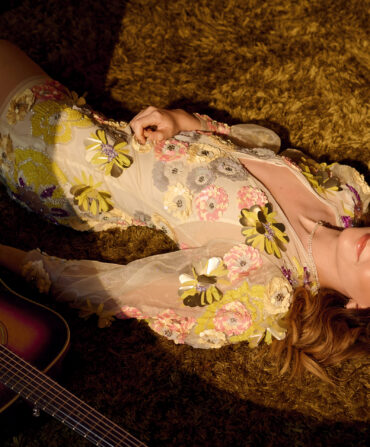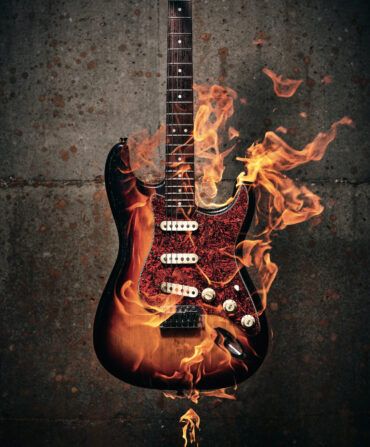Music
The Epic Return of Lucinda Williams
After striving to overcome a stroke that left her partially paralyzed, the Louisiana native knows one thing for sure: Nothing will stop her from going where the music takes her

Photo: David McClister
Lucinda Williams, photographed in Watertown, Tennessee.
Lucinda Williams doesn’t remember a lot about that afternoon.
It was November 17, 2020, and the acclaimed singer-songwriter and her husband of eleven years, Tom Overby, had been quarantined in their East Nashville bungalow since March. Williams was using her newfound downtime to work on her memoir, Don’t Tell Anybody the Secrets I Told You, and record a series of performances called Lu’s Jukebox that would become tribute albums. She also had a number of songs left over from her most recent album, Good Souls Better Angels, that she wanted to develop. In just a week, she’d be nominated for her sixteenth and seventeenth Grammy Awards.
But when she tried to take a shower, Williams began to feel… exhausted. Her head swam; her legs wobbled. All she could think about was lying down. She grabbed some towels and curled up on the bathroom floor, where Overby found her minutes later. He helped her back to bed and kept an eye on her for the next hour. She asked him not to call the doctor. “I regret this,” Overby tells me. “I should have called right away.”
When Williams tried to get up again and couldn’t, Overby knew something was seriously wrong. Soon Williams was in an ambulance headed to the intensive care unit at Vanderbilt University Medical Center, where she learned that a blood clot had formed in the right side of her brain, leaving the left side of her body partially paralyzed. She and her husband didn’t come home for five weeks.
“Before I had one, I didn’t even know what a stroke was,” Williams, who is now seventy, says. “I heard about people having them, but I didn’t know you could die from one.”
She spent almost five months in a wheelchair. Two physical therapists worked with her every day, taking her through a series of strengthening and stretching exercises, first at a rehabilitation center, then at home. Gradually, with the help of a walker, then a cane, Williams learned to walk again. Her doctors were optimistic about her recovery, but none knew precisely how much function she might regain, or when. “I really didn’t think about how long it was going to take,” she says.
Most days, Williams tried to approach her condition with curiosity, not fear. “She was fascinated,” Overby recalls, almost as if she planned to conduct research inside her own body. Other times, the enormity of it overwhelmed her. “Am I ever going to be able to go sing again?” she asked Overby through tears one day. “You absolutely are,” he told her. The stroke had not affected her voice.
It had, however, sapped the strength from her left hand, meaning she couldn’t work the fretboard of her guitar, which she’d used to figure out the melodies on every song she’d ever written. Without it, she wondered, who was she as a writer, as an artist?
A future without music—her life, her comfort, the core of her identity since she was twelve—was no future at all. But “if there’s one thing I’ve learned in my life with Lucinda,” her tour manager and close friend Travis Stephens says, “it’s to never f **king underestimate Lucinda.”
Lucinda Gayle Williams was born in Lake Charles, Louisiana, the eldest of three children, but she grew up everywhere, or nowhere in particular. Her family moved a dozen times by her eighteenth birthday, mostly to cities and small towns around the South, but also to places as far away as Santiago and Mexico City. Her father was the renowned poet Miller Williams, who in 1997 read at Bill Clinton’s second inauguration. Her mother was Lucille Day, an avid reader and talented pianist who loved Judy Garland and Ray Charles.
Lucille, whose dreams of playing music professionally had stalled, later drifted in and out of mental hospitals, battling depression and alcoholism. “Anything could happen, beautiful or horrible, at any given moment,” Williams writes in her memoir, including Lucille locking Lucinda in a closet because the three-year-old was crying. The singer looks back on her mother’s illness now with sympathy, not anger. “I could tell that everybody was trying,” she writes of her family. “And that seemed normal, the trying.”
Miller Williams became his daughter’s primary nurturer and protector. He wrote constantly, always carrying index cards in his shirt pocket to work out his poems. In the late 1950s, he befriended Flannery O’Connor and began visiting her home, Andalusia, in Milledgeville, Georgia. When he brought a young Lucinda with him, O’Connor let her chase the peacocks that roamed the property.
“What I learned was that every artist needs a mentor,” Lucinda Williams tells me. “Everyone needs someone that they feel like is a little bit better than they are—something to aspire to. For my dad, it was Flannery O’Connor. For me, it was my dad.” Even as a child, Williams paid close attention to the care and precision her father brought to his craft. He taught her about the importance of finding the right word for a poetic line, not just any word that will do. The difference between the two, as Mark Twain famously said, was the difference between the lightning bug and the lightning.
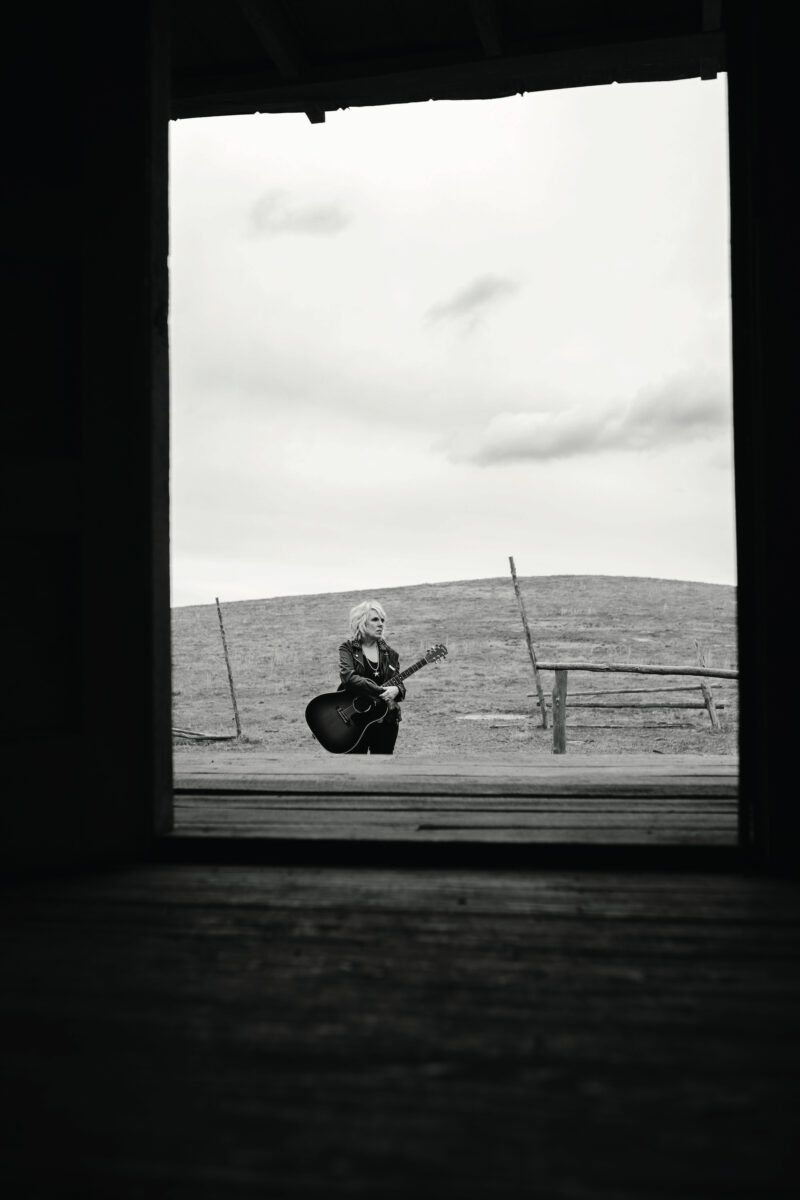
Photo: David McClister
Williams with the trusty Gibson J-45 she plays onstage.
Williams got her first guitar, a Sears Silvertone, when she was twelve. One of her father’s graduate students taught her the rolling fingerpicking style that would become her signature. It was 1965, the height of the folk music era and Beatlemania, the year Bob Dylan went electric. “Poetry was suddenly merging with kick-ass rock and roll on this album,” Williams writes of hearing Dylan’s Highway 61 Revisited. “I knew this was what I wanted to be.” That was also the year that Miller began a relationship with an eighteen- or nineteen- year-old woman who would later become Williams’s stepmother, and the year Williams began to struggle with obsessive-compulsive disorder. Music offered her another way of coping—“my therapy for dealing with many of the traumas I suffered as a child,” she writes.
Finding her voice took time. Williams first tried to sing “high and pretty” like Judy Collins; then she discovered the lower, plaintive vibrato of Bobbie Gentry. Within a few years, she was writing her own songs and performing them for the writers and poets who attended her father’s raucous literary parties.
In her teen years, Williams developed a rebellious streak, especially in matters of social or political conscience. Her New Orleans high school kicked her out twice, first for refusing to recite the Pledge of Allegiance, then for ditching class to attend a protest against racism. She enrolled at the University of Arkansas, where her father settled in 1971, but dropped out after a semester to pursue music full-time. For good luck, her mother gave her a butter bean blessed by a priest in New Orleans; she carried it in her pocket when she played.
It would take eight years of waitressing and working odd jobs in New Orleans, San Francisco, Houston, and Austin before she cut her first record, at age twenty-six, and another decade in New York, Los Angeles, and Nashville before she broke through. In Jackson, Mississippi, a roach once fell on her head during a set. In Slidell, Louisiana, she played behind chicken wire to avoid getting hit by beer bottles. By the time she won her first Grammy (for the song “Passionate Kisses,” which Mary Chapin Carpenter covered in 1992), she was forty-one.
Williams skipped the awards ceremony. “I was not just self-conscious, but also scared,” she writes. “I feared that I didn’t belong. It’s a feeling I’ve been trying to shake my entire life.”
To a male-dominated, marketing-driven industry that fetishized youth, she didn’t belong—at least not in the way record executives wanted her to. There would be no spangles or shoulder pads; she wore dark eyeliner and leather jackets with her cowboy hats. Her songs blended folk and blues, rock and country, punk and zydeco, with an undercurrent of Southern gothic, as if Flannery O’Connor had joined Tom Petty for a late-night drive. Like traditional folk ballads, most of them didn’t have bridges, and they weren’t easily packaged for mainstream radio. They were songs for people who cared about storytelling: personal and direct, plain and profound, filled with misfits who were still worth loving.
Williams tried not to get “too spiritual woo-woo” about the writing process, but when the music was going well, she felt as though she became “a receptacle or vehicle through which the creativity flows.” Sometimes that happened in a bar, sometimes at a cheap motel. Other songs she crafted from a file of notes she kept in a briefcase. She revised her lyrics countless times, usually seeking her father’s feedback, then worked out the melodies on a ’72 Martin D-28. She was the storm, and her guitar drew the strike.
In life, anxiety and self-doubt plagued her. She dreamed she was trapped in a house filled with dark secrets and locked doors. But in her songs, all the doors were open. She could talk about every feeling, every heartbreak, every toxic—even terrifying—relationship. She went where the silence was and sang.
“Her voice was the most original thing of anybody that I knew,” says the singer-songwriter Steve Earle, who met Williams in Texas in the early seventies. “She wasn’t trying to be Joan Baez or Joni Mitchell; she was trying to be Muddy Waters or Howlin’ Wolf.” Her literary worldview combined with her lively rhythm guitar, honed over years of busking on street corners and gigging with blues musicians, granted her entry into what was then very much a “boys’ club.” She and Earle became friends, running in the same circles as the outlaw guitarist Blaze Foley and cult legend Townes van Zandt.
In 1995, Earle wrote the duet “You’re Still Standin’ There” with Williams in mind. Singing on Earle’s record introduced her to Ray Kennedy, a Nashville producer she still works with today, and an even wider audience. By then, she had already recorded the first version of her fifth album, Car Wheels on a Gravel Road.
Myths and legends about the making of Car Wheels persist. Over the course of five years, Williams recorded the entire album twice at several different studios and butted heads with multiple producers—including Earle—before nailing a sound that satisfied her. “Working in the studio,” she says, “whatever issues are going on with people seem to bubble to the surface. It becomes like one big therapy session.”
At one point, after weeks of smaller conflicts, Williams complained to Earle that she sounded too slick, too “overproduced,” and asked to rerecord her vocals for the song “Lake Charles.” Earle told her she didn’t need to. She insisted. “It became this long, labored thing, and nothing was getting finished,” Earle recalls. Finally, exasperated, he’d had enough. “When are you going to trust someone, Lu?” he said.
“Looking back,” Williams says, she knows Earle pushed her musically “because he cared, and he loved me and appreciated what I did.” But at that point, she couldn’t trust most other people with her work, and the journalists who wrote about her during this period in the nineties weren’t kind to her about it. They portrayed her as flaky and neurotic, shackling her with the label “obsessive perfectionist” for years.
In truth, Williams was petrified. For more than two decades, she’d been one of only a handful of women making this type of music, which mainstream record labels told her was “too country for rock” and “too rock for country.” She’d crisscrossed America playing small bars while pulling shifts at taco stands and health food stores. She’d lost several talented friends to suicide. Now that her career had finally taken off, she wanted to do her best work, and obsessing over small details became the way her brain tried to protect itself. That pressure built until she broke—or at least until she crumpled to the floor of the vocal booth and cried.
Williams and Earle later smoothed things out, largely because of how much Earle admired Williams’s underdog tenacity and her compassion as an artist; he still does. “This job is empathy,” he says. “People don’t give a f **k what happened to you, they care about what happened to you that also happened to them.” And Williams had a way of writing songs that made listeners feel understood.
Car Wheels on a Gravel Road was finally released in 1998, when Williams was forty-five. The vision she fought so hard to realize turned out to be the right one. Rolling Stone called it “near absolute mastery of the pop songcraft” and “excellent only when it isn’t superlative.” The album spanned the full emotional scale, from up-beat anthems to brooding ballads; pure silk laced with snake venom. Within a year, it went gold and won Williams a second Grammy, this time for Best Contemporary Folk Album. More important, it influenced an entire generation of younger artists.
“In the frame of a song, we don’t have a lot of time to work,” the singer-songwriter Jason Isbell explains. “In order to take the listener to the place where you want them to be, you have to pick exactly the right details. And I feel like Lucinda has always been a master of that.” Had it not been for her example, Isbell says, “I would have settled for a lot of the wrong words.”
Ask her fans to quote their favorite Williams lines, and most can rattle off a list. Maybe it’s “heavy blankets cover lonely girls,” or “I need a little time / to follow that unbroken line / to the place where the wild things grow.” (Mine have always been “If we lived in a world without tears / …How would broken find the bones?”) One of Isbell’s favorites comes from “Bus to Baton Rouge,” a slow waltz off Williams’s 2001 Essence album, in which the singer recalls childhood visits to her grandparents’ home and the family turmoil associated with it:
There was this beautiful lamp I always loved
A seashore was painted on the shade
It would turn around when you switched on the bulb
And gently rock the waves
The musician Sharon Van Etten explains Williams’s skill this way: “She can look back on her life and tell a story like it’s not happening to her. She can see pain in places that other people or other writers may not want to go.” Having once left an abusive relationship, Van Etten hears in Williams’s lyrics the strength of a woman who refused to let darkness define or diminish her. “Anyone that’s a survivor of any nature, really, connects with her music,” says Van Etten, who is forty-two. In 2021, Williams covered Van Etten’s song “Save Yourself,” and the memory of it still brings the younger songwriter to tears. “She gave it all this wisdom that I can’t yet.”
That wisdom has been hard-won. The success of Car Wheels on a Gravel Road vaulted the normally shy Williams into a new level of fame, one she didn’t always feel equipped to handle. She was now playing for much bigger audiences and, suddenly, besotted strangers felt that they knew her. “One time, after a show in Minneapolis, this woman said, ‘Did you have a difficult childhood?’” she says. A tired Lucinda nodded, thanked her, and walked backstage. At times, all she wanted to do was hide.
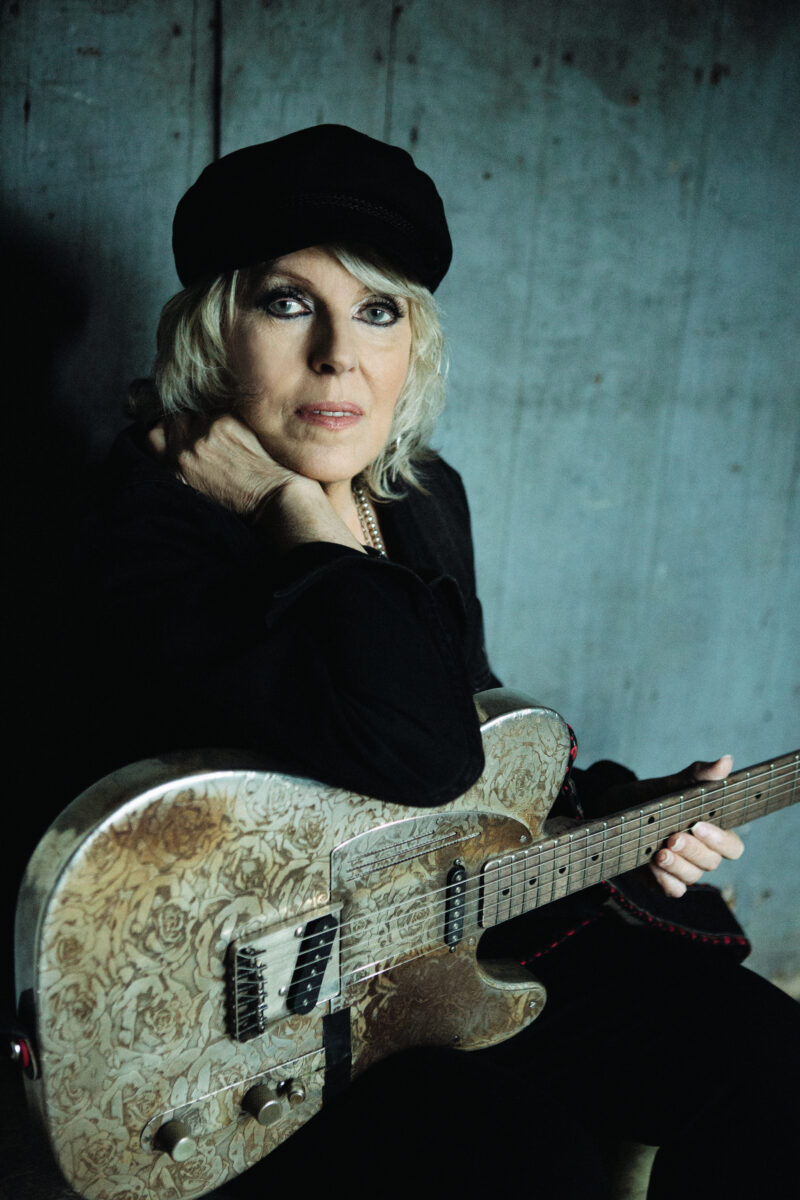
Photo: David McClister
The Los Angeles luthier James Trussart custom-made Williams’s primary electric guitar.
Instead, Williams leaned on her band, whom she considered her family, and came to understand that she didn’t have to be so hard on herself. No one gifted her with talent; she earned it. After so many years of second-guessing, she “learned how to connect with audiences and got comfortable with it,” Steve Earle says. “She slowly but surely realized that it was out there, that those folks were out there, and they were going to let her just be the way that she is.”
Her next two albums, Essence in 2001 and World without Tears in 2003, showed an even more elevated lyrical style. The track “Get Right with God” won her a third Grammy—for Best Female Rock Vocal Performance. Before Williams knew it, she had joined the ranks of America’s most revered songwriters. Many of the luminaries she once worshipped—Neil Young, Tom Petty, Robert Plant, Elvis Costello, Chrissie Hynde, Emmylou Harris, Bruce Springsteen—have now covered her songs.
The singer’s stature had grown so much by 2006 that the eminent jazz guitarist Bill Frisell was nervous the first time she invited him onstage. Then, as Frisell started to play, he noticed Williams subtly shift her singing to follow his lead. “I felt completely free,” he recalls of that moment. “There wasn’t an expectation that I was supposed to fill some role. She wanted me there for my personality and my sound, so I felt safe, and I wasn’t afraid.”
The last piece of the puzzle slid into place in 2009, when, after almost five years of dating, Williams married her manager, the former music executive Tom Overby, onstage at First Avenue in Minneapolis. Overby has coproduced all her albums since. Williams found in Overby, unlike the turbulent poet-on-a-motorcycle types she once fell for, a solid partner she could trust in her most vulnerable moments.
“I could sense she was going through something, and I just instantly cared about her,” Overby remembers of their first meeting, which happened the year after Williams’s mother died. “She’s just a very wide-open person. The most honest, the most loving and caring person. And all those qualities were apparent right away.”
Greg Leisz, a first-call session musician who has played on several of Williams’s albums, including Car Wheels, has seen a distinct shift in her since the early days. “Her songwriting has been of the same caliber since the very beginning of her career,” he says.
“It’s not like all of a sudden she became a better writer.” What has changed is Williams’s confidence. “She seems fearless to me now.”
All of the paths that led Williams to that November day in 2020—the rejections and triumphs and losses and lessons—converged on the singer’s bathroom floor. This time, the fortitude she had developed while navigating them led her in a new and unexpected direction.
Williams and Overby kept her stroke a secret for more than five months. “I knew once it went public, it would be a lot for her to deal with,” Overby says. The two effectively entered a “bubble” in which Williams could recover with no distractions. As his wife pushed herself in therapy and regained some of her physical strength, Overby noticed she was most driven when she focused on returning to music. “I thought, ‘Well, the best therapy is to get her back being who she knows she is.’”
Just a few months after she came home, Williams’s team received a request for her to sing at a wedding near Knoxville in May 2021—a gig she had committed to years prior but COVID had delayed. Though she couldn’t play guitar or stand for long periods, she wanted to do it. She thought about icons like Jessie Mae Hemphill, the blues musician who continued to perform after having a stroke in 1993. She couldn’t play guitar either; instead, Hemphill kept tempo with a tambourine. “I remember being really impressed by her,” Williams says. “Because she was still singing and doing it, singing and being in it.” After months of preparation, Williams performed at the event in a wheelchair.
The next step came just a few weeks later, when Williams sang at a Grand Ole Opry tribute concert for ZZ Top’s Billy Gibbons. The crowd erupted as the lights rose and she began singing “Jesus Just Left Chicago” while leaning on a chair for balance. Her voice sounded as strong as ever, but now it possessed an even more haunting depth. For the first time since the stroke, Williams was able to stand through the whole song. “I was in tears watching that because I knew progress was being made,” Overby says. “It seemed to me like this was the greatest thing that could be happening. She was working toward this. She had a goal.”
Going on the road would present a much bigger challenge, but Williams had Overby, her band, called Buick 6, and the rest of her close-knit team to monitor her health. “I just figured, they’ll help me,” she recalls. “You know, I’m gonna do this.” She packed up her jeans and leather jackets and coheadlined several big shows with her friend Jason Isbell that summer.
“Okay, here’s the deal,” she dryly told the audience at Red Rocks Amphitheatre outside of Denver. “I’m not gonna be playing guitar, because, well, that’s not happening right now. But I can still sing.” The audience cheered. “She had a chair, but she didn’t want to use it,” Isbell remembers. “All of us were like, ‘Lucinda, it’s fine if you need to sit down!’ But I saw a determination in her to perform that seemed like it was even greater than the determination she’d had before she had a stroke. That gave me a lot of hope.”
Occasionally, old doubts would creep back in. “She’ll say sometimes, ‘I wish I could play guitar,’ and ‘I wonder if people are upset that I’m not playing,’” Travis Stephens, Williams’s tour manager, tells me. “Nobody cares! Nobody’s coming and buying tickets for that. They want to hear that voice sing those songs. And that’s all still there. Even more—she’s singing better than she ever did.”
Williams returned to Nashville in October 2021 and committed to facing the last hurdle: writing new songs again. She had witnessed firsthand what happens when an artist loses the ability to create. Shortly after her father developed Alzheimer’s in 2010, he told her he could no longer write poetry. “That was the first death,” she told an interviewer after Miller died in 2015, “because that part of him was gone.”
Without her guitar, however, Williams would have to rely on those she trusted most. Overby began bringing her ideas and snippets of lyrics, themes he knew she was drawn to, and vice versa. When they came to something they liked, Williams would suggest changes or combine it with lines she’d already been working on (she still keeps the same briefcase full of notes). The two went back and forth, sculpting each piece until what remained was unquestionably a Lucinda Williams song. “It had only taken me fifteen years to prove to her I was up to it,” Overby jokes.
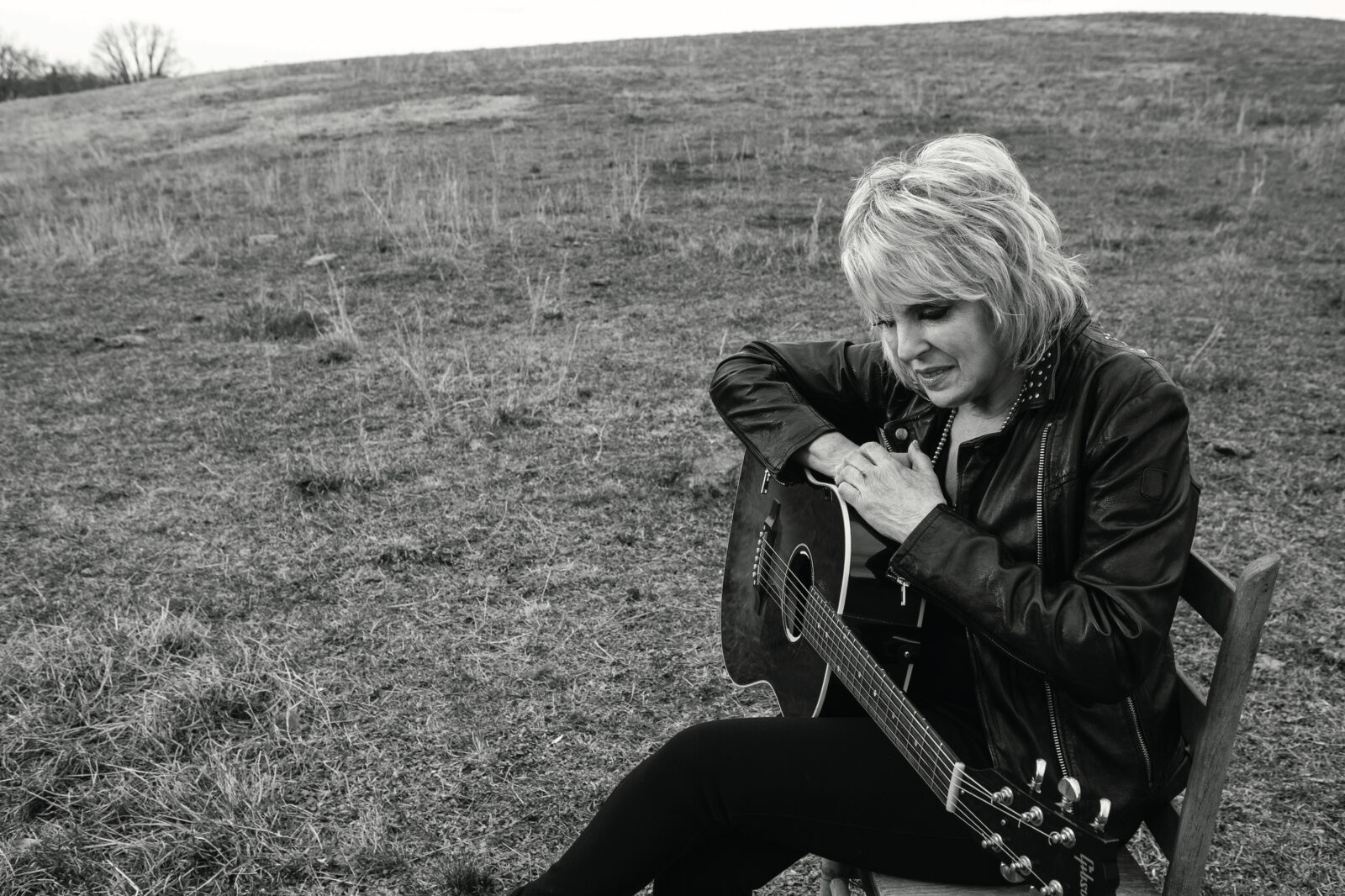
Photo: David McClister
Williams will release her latest album, Stories from a Rock n Roll Heart, on June 30.
Stephens, who lived in the apartment above Williams’s garage during the height of the pandemic, became her left hand. She’d hum a few notes or tell Stephens what sound she was “hearing” for each song (“soulful” or “jazzy” or “Pretenders-ish”), and he’d riff on guitar until he hit the right melody. The first song they completed was, fittingly, “Where the Song Will Find Me,” an ode to the mysteries of inspiration.
Soon, “I got to where I was kind of enjoying it,” Williams says of the process. After about six months, she had assembled a dozen or so songs she liked, and she began recording them at Ray Kennedy’s Room & Board Studio in Nashville. Bruce Springsteen and Patti Scialfa, Margo Price, and Angel Olsen provided backing vocals.
It’s hard to listen to the resulting Stories from a Rock n Roll Heart, out June 30, and not hear parallels to Williams’s memoir, which she was finishing at roughly the same time. A thread of reflection or wistfulness runs through almost every song, an awareness of the years slipping past and a longing to come clean. Olsen, who appears on “Jukebox,” calls it “the final truth in the late-night hour.” There are last calls and last dances, stolen moments and secret struggles. Even the hardest rocking numbers, “Let’s Get the Band Back Together” and “New York Comeback,” which were cowritten by Williams’s friend the musician Jesse Malin, feel a bit like elegies: “Some are missing and some still here / Let’s sing a song for the disappeared.”
Given these themes, one might expect the record to feel sad. It doesn’t. “She’s not afraid to have fun with the human condition,” Malin says. “She can see the beauty and the wreckage in all of us,” while at the same time being able to “give us a reason to keep going and to celebrate the crazy world we’re in.”
“Even her darkest songs, even her darkest material is, if you look under the surface, brimming with hope,” Stephens adds. “It wants to believe that everything is just going to be okay.”
The ability to wrap light around life’s difficulties has always been Williams’s singular gift, one that an ever-growing number of people are waking up to. In January 2022, she was inducted into the Austin City Limits Hall of Fame; last fall, Broadcast Music, Inc., awarded her its Troubadour Award, and this past February, the Americana Music Association honored her with a pre-Grammy tribute concert featuring Mumford & Sons, Dwight Yoakam, Molly Tuttle, and more than ten other artists.
“She’s sat at the table with the greats,” says Katie Crutchfield, who performs as Waxahatchee. “And what a great hero she is for all of us chasing that dream.”
The last time I call Williams, in early March, she’s just gotten off the phone with Mike Campbell, one of the cofounders of the Heartbreakers. She is getting ready to go back out on tour and anxiously awaiting the release of her memoir. Is it good enough? Did she take it through enough drafts? “I wanted to tell the truth and have it be honest,” she says. She hopes it will help those who’ve experienced mental illness in their families feel less alone.
Williams hasn’t yet regained her ability to play guitar, but she is already thinking about songs for her next album and maybe even a second book. The questions she once had about who she is and what she stands for have faded—she knows the answers now. “I was stronger than I thought I was.”


